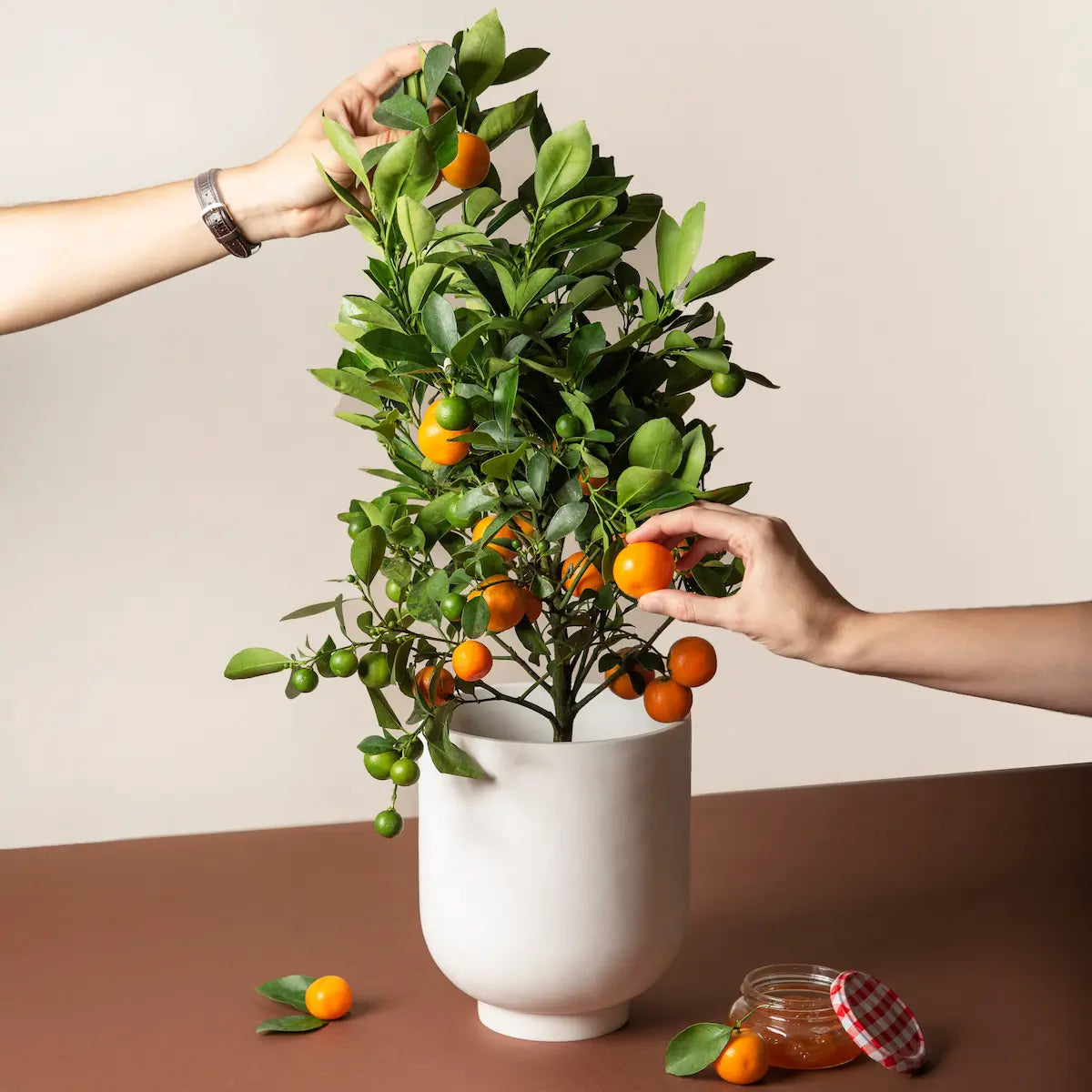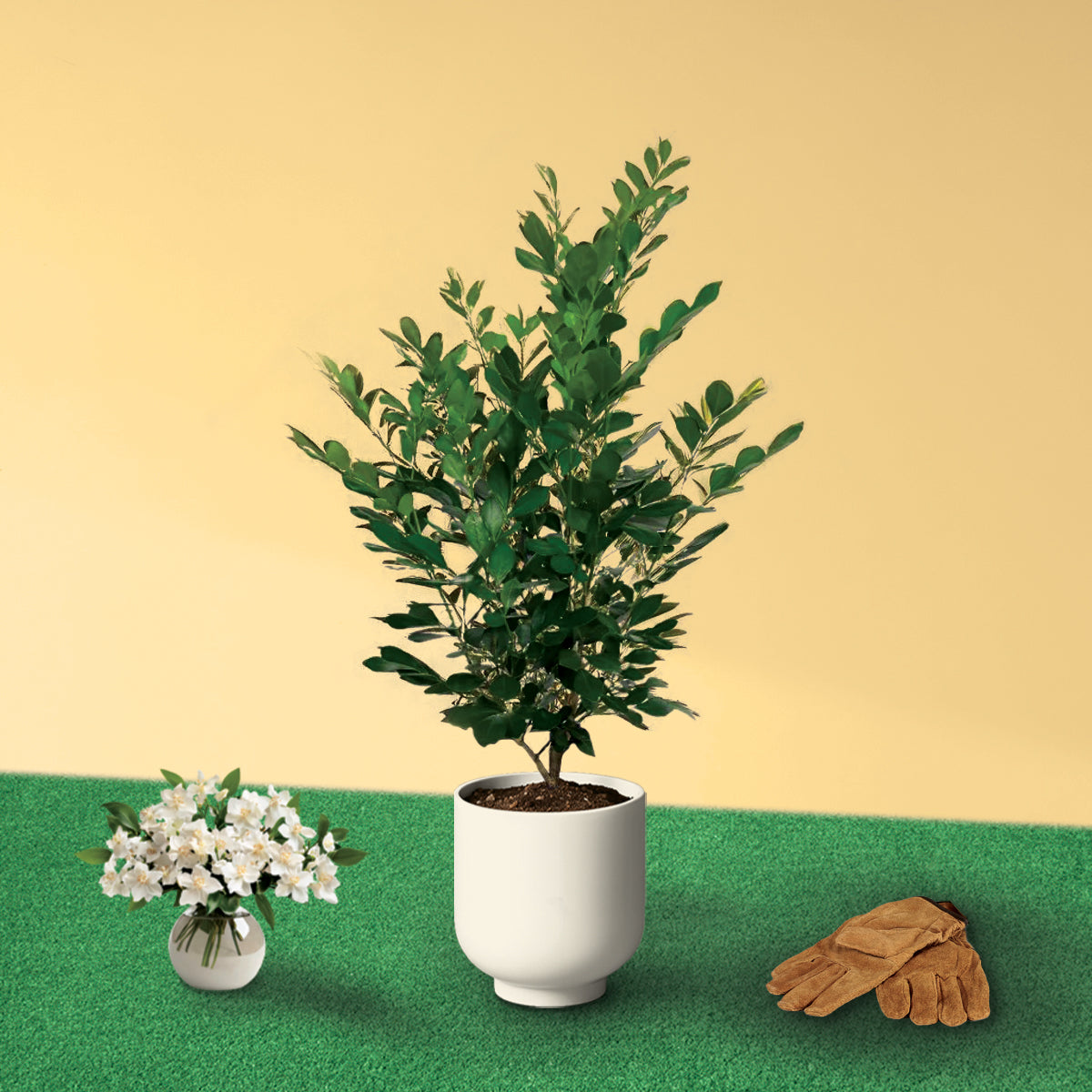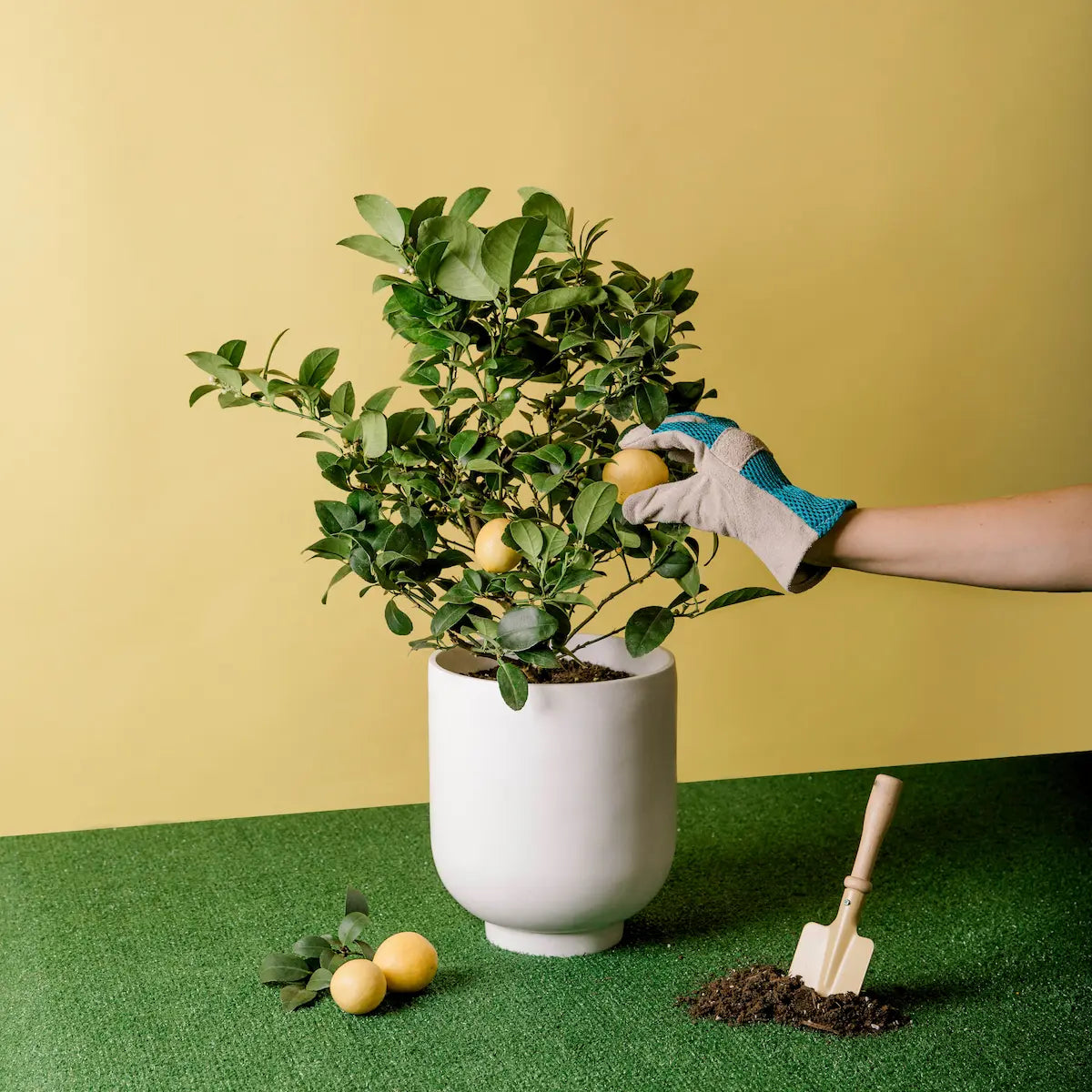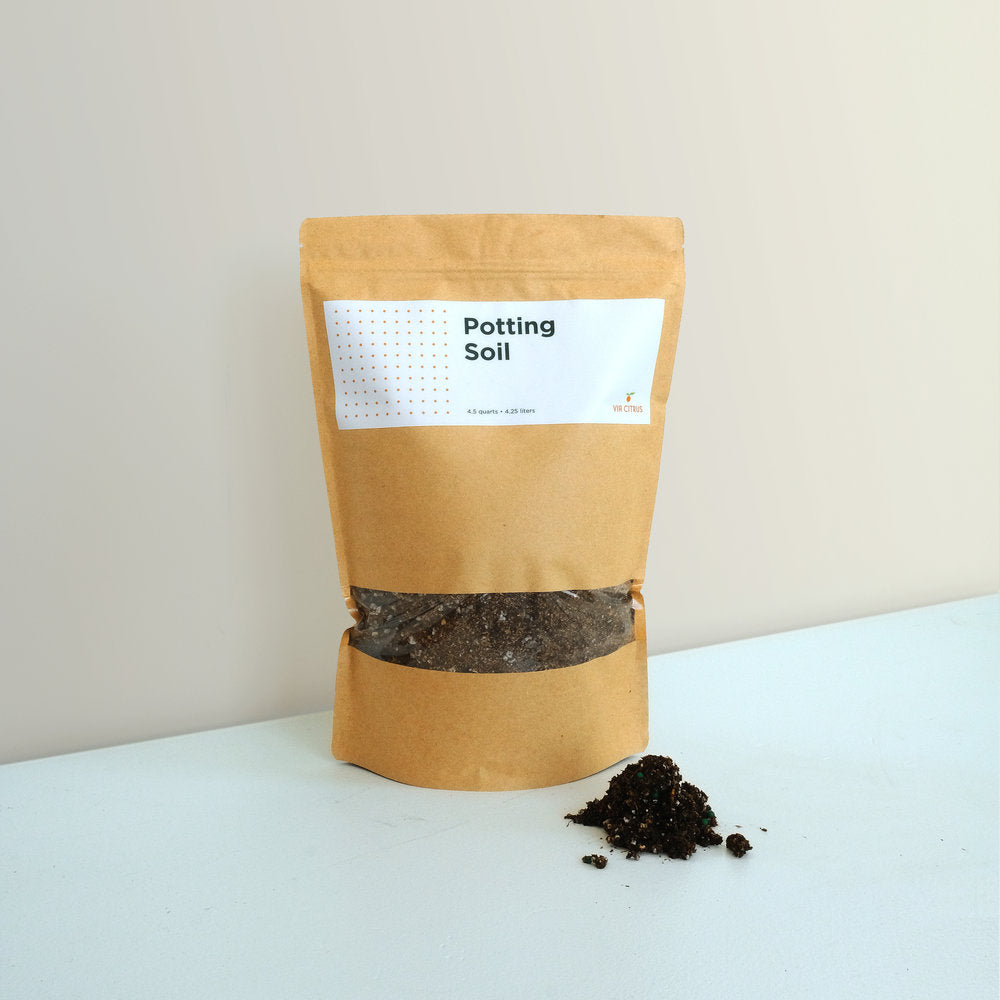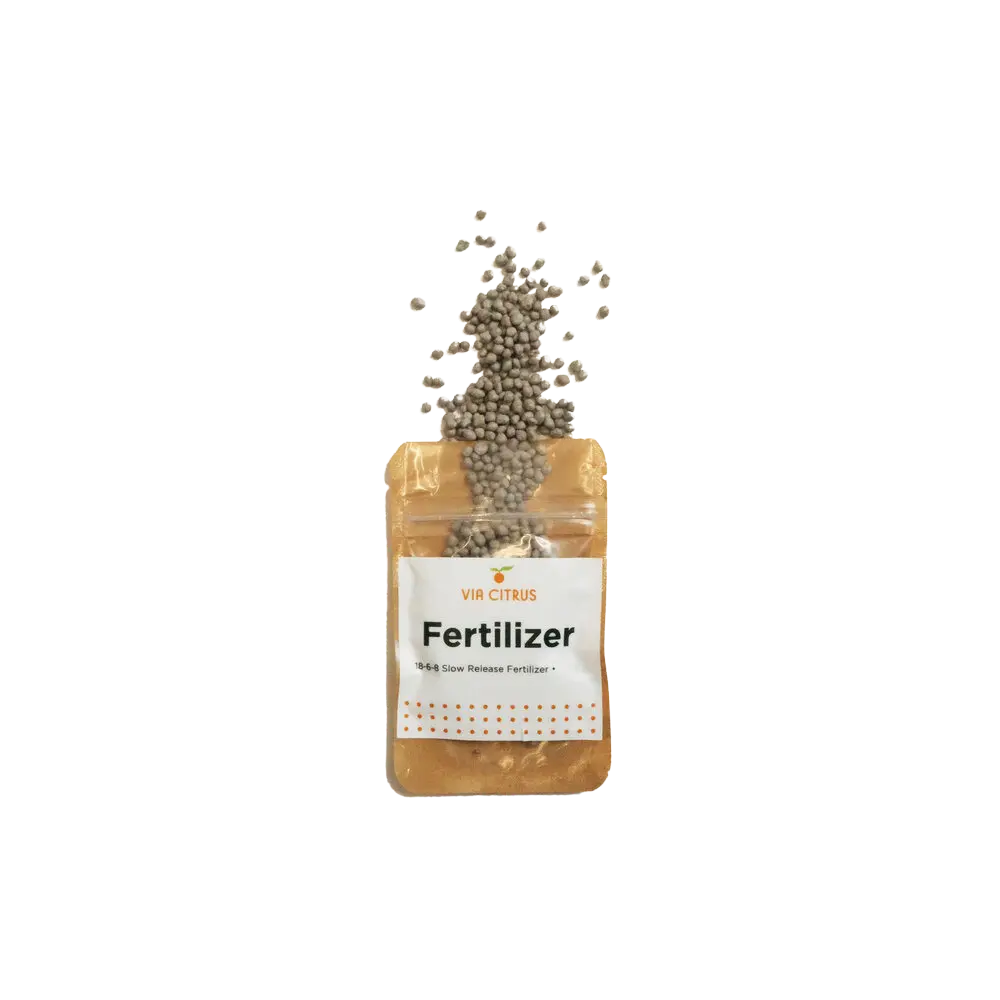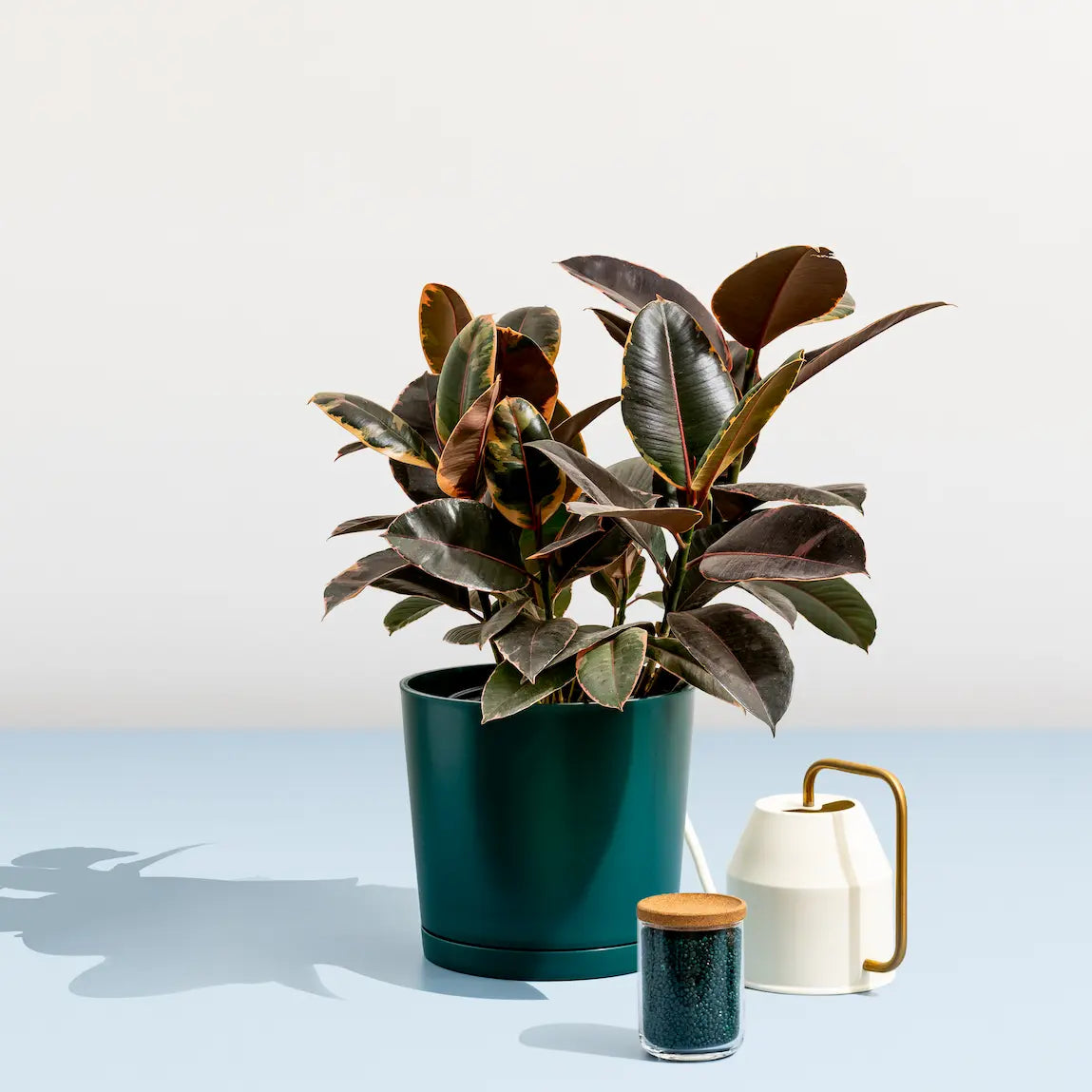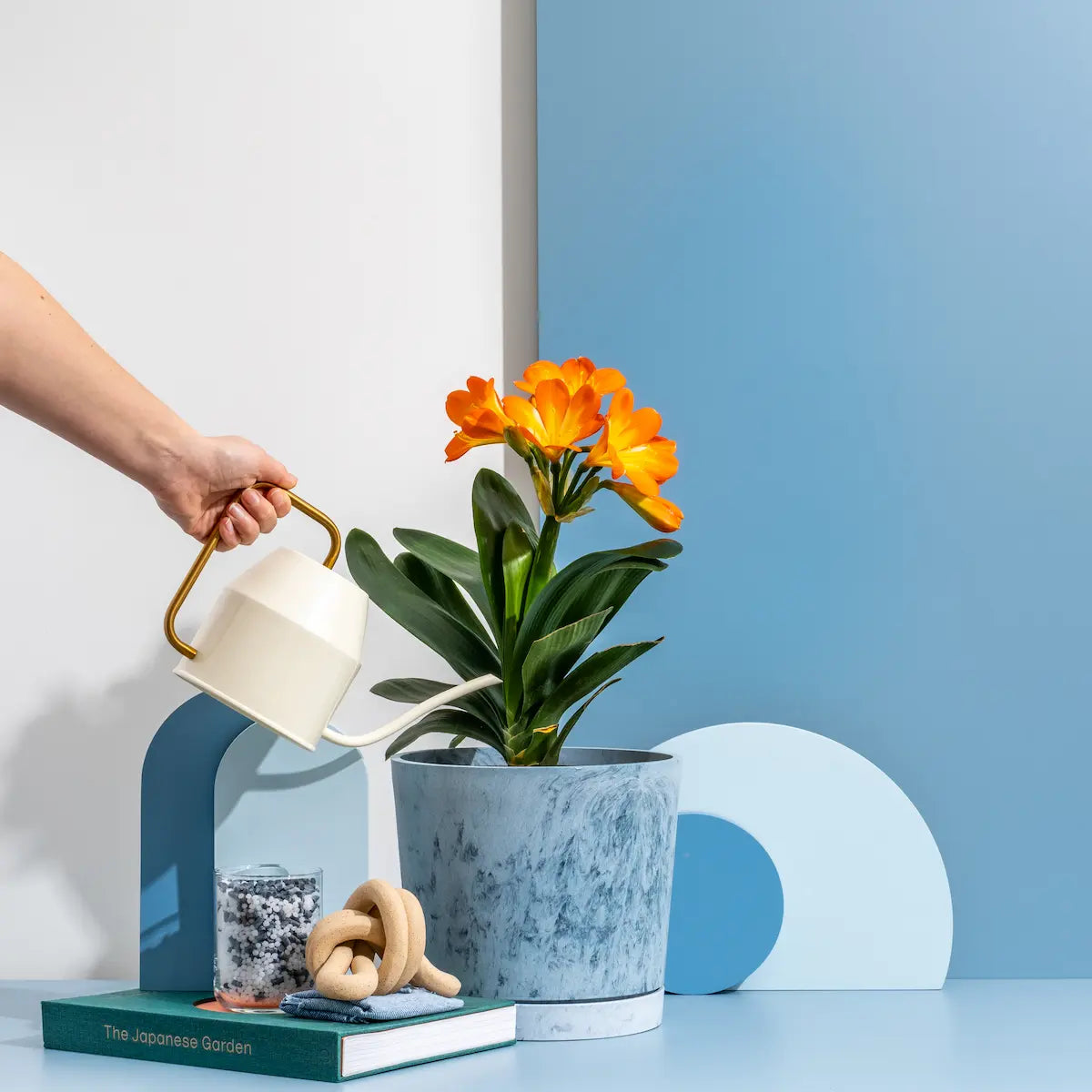As the temperatures start to drop and we inch closer to winter, our citrus plants might be signaling that they're not so happy with the cold. If you've been cultivating luscious lemon trees or charismatic calamondins on your patio, you know that once the mercury dips below 40°F, it's time for a change of scenery for your green friends.
Let's dive into the art and science of transitioning your citrus plants indoors!
Why Bring Them In?
Citrus plants are tropical and subtropical in nature. While they can handle some cooler temperatures and even benefit from them (it can help enhance fruit coloration), extended exposure to temperatures below 40°F can be damaging. Frost can be particularly devastating, leading to leaf drop, damaged fruit, and even...dead citrus plants
Timing is Key
Watch your local weather forecasts. If temperatures consistently hover around 50°F and are predicted to drop further, it's a good time to consider the transition. An abrupt change from hot to cold is more damaging than a gradual cooling.
Choose the Right Location Indoors
Before you bring your plant inside, decide on the best location:
- Light: Citrus plants adore sunlight. A south-facing window is ideal.
- Temperature: Keep the indoor environment between 65°F and 70°F during the day and above 50°F at night.
- Humidity: Citrus loves humidity! Consider placing a humidifier nearby.
Prep Your Plant
Before transitioning:
- Inspect for Pests: Check for bugs like aphids, spider mites, and mealybugs. Use insecticidal soap or neem oil to remove any pests. Using these products for preventative care even though you don’t see the pests is also recommended.
- Prune: Remove any dead or damaged branches.
- Watering: Water the plant a day before the move, ensuring it's well-hydrated.
Ease the Transition
Don't just move your citrus from outdoors to indoors abruptly. This sudden change can stress the plant. Instead, over a week or so, start by placing your citrus plant indoors in its desired location for a few hours a day, gradually increasing the indoor time. Be cautious of leaf drop during this period; it's a common response to the change in environment, but the plant will usually recover.
Care Indoors
While inside citrus plants need less water in winter. Ensure the top inch of soil is dry before watering. If your citrus tree is not getting at least 4-6 hours of direct sunlight, we recommend investing a grow light.
The Great Outdoors Awaits
As winter ends and temperatures rise, your citrus plant will be eager to head back outside. Reverse the transition process, gradually reintroducing your plant to the outdoors. Ensure there's no risk of frost before permanently placing them back on your patio.
Transitioning your citrus plants indoors during colder months might seem like a daunting task, but with a little preparation and love, your tropical beauties will thrive and continue to grace you with their aromatic blooms and juicy fruits. Remember, at Via Citrus, we believe in nurturing nature, and with these steps, your citrus journey will continue, irrespective of the season!

